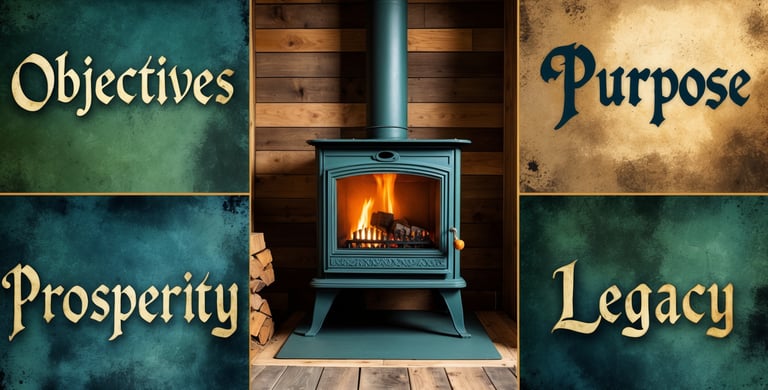Survival: Medical Survival
Field Trauma, Wound Care, and Infection Prevention Without Hospitals
4FORTITUDER - READINESS, SURVIVAL, PREPAREDNESS, HOMESTEADING
Survival: Medical Survival
Field Trauma, Wound Care, and Infection Prevention Without Hospitals
“In battle, the wounded man who stays calm lives. The panicked man bleeds out.”
— Combat Medic Proverb
When There’s No 911, You Are the Hospital
In collapse, injury is inevitable. But death from injury? Often preventable.
Without medical infrastructure, what you know and what you carry become your emergency room. One bad cut. One infected tooth. One untreated fracture. That’s all it takes to go from functional to fatal.
Medical survival isn’t about mastering surgery. It’s about stopping death, preserving function, and buying time—time to heal, time to evacuate, or time for help to return.
Western medicine sees trauma as a job for the system. Survival training sees it as a mandate for the man.
Core Knowledge Foundation: The Four Domains of Survival Medicine
In austere environments, your primary medical goals are:
Hemorrhage Control – Stop bleeding now or the patient dies.
Wound Care and Infection Prevention – Keep injuries clean, dry, and sealed.
Fracture and Immobilization – Prevent movement that worsens damage.
Internal Symptom Triage – Identify danger signs and act without delay.
Misconception Warning: Survival medicine is not just “first aid.” It’s crisis stabilization when professional care is unreachable.
1. Hemorrhage Control – Bleeding is the Silent Killer
What to Do:
Direct Pressure: Immediately cover wound with cloth or gauze. Press firmly.
Elevation: Raise limb above heart to slow flow.
Tourniquet Application: For arterial bleeding (bright red, pulsing). Apply high and tight. Document time. Reassess every 30 minutes.
Gear to Carry:
CAT Tourniquet (genuine, not imitation)
Israeli Bandage or pressure wrap
Hemostatic gauze (e.g. QuikClot)
Nitrile gloves
Drill: Simulate a thigh bleed on a dummy or training limb. Apply tourniquet one-handed under 10 seconds. Then simulate 1-minute pressure wrap. Repeat monthly.
2. Wound Care and Infection Prevention
What to Do:
Irrigate Thoroughly: Use clean water or saline. Flush debris—don’t just cover it.
Antiseptic: Iodine or betadine. Avoid hydrogen peroxide on deep wounds—it kills healthy tissue.
Seal and Watch: Apply dressing. Change daily. Look for redness, swelling, pus, odor.
Field Options:
Honey or sugar can be used as antibacterial wound packing (osmotic effect)
Plastic wrap + duct tape = improvised occlusive dressing
Superglue (cyanoacrylate) for skin closure—only when wound is clean
Drill: Practice cleaning, dressing, and sealing a 2” simulated laceration. Use both dominant and off-hand.
3. Fracture Stabilization and Immobilization
How to Spot:
Severe swelling
Deformity
Inability to move
Grating sound (crepitus)
What to Do:
Splinting: Immobilize the joint above and below the break.
Use wood, tent poles, rolled-up foam, or sticks + clothing.
Wrap tightly but not enough to cut off circulation.
Sling: For arm injuries. Triangle bandage or shirt sleeve works.
Gear to Keep:
SAM splint (lightweight, moldable)
Ace wrap
Triangle bandage
Drill: Simulate a tibial fracture. Create a splint using only items in your backpack. Move 100 yards safely.
4. Internal Symptom Triage – Knowing When It's Serious
Know These Red Flags:
Persistent vomiting or diarrhea = rapid dehydration
Fever with rash = infection or vector-borne illness
Blue lips/nails = hypoxia or poor circulation
Severe abdominal pain = internal bleeding or rupture
Confusion/slurred speech = possible stroke, heat illness, or shock
Actions:
Treat symptoms aggressively (fever, nausea) but don’t mask deterioration
Hydrate with electrolytes (ORS)
Keep warm if in shock; cool if hyperthermic
Drill: Create a flowchart for treating unknown illness: Start with vitals → symptoms → color of skin → known exposures. Run through 3 random symptom simulations.
Advanced Insights: Pain, Panic, and Purpose in Trauma
The hardest part of field medicine isn’t the blood—it’s the mental fog.
The patient may scream, shake, or collapse. You may freeze. The survival medic’s real job? Lead through the fear.
Historical Anchor: Vietnam Combat Medics (1955–1975)
Many had minimal training. Yet under gunfire, they applied tourniquets, stuffed wounds, and saved lives—because they practiced. Not in comfort—but in chaos.
They didn’t wait for the system. They became the system.
Critical Perspectives: Medical Overreliance and the "Call for Help" Myth
Adversarial Viewpoint:
“You shouldn’t do medical care without a license. Just wait for help. Doing it wrong is worse than doing nothing.”
Response:
In collapse, there is no help coming. Doing nothing guarantees death. Survival medicine is not about perfection. It’s about buying time, slowing death, and preserving life until professional care is possible again.
Wisdom and Warning Duality
When Followed: You remain composed. You stop bleeding. You preserve function. You protect dignity.
When Ignored: You watch someone die slowly—bleeding, suffocating, or infected—while you stand by with unused gear and forgotten skills.
Strategic Crossroad: Will you build skill now—or gamble with someone else’s life later?
Final Charge & Implementation
Brother, when others bleed, you must act. Not with hesitation. Not with doubt. With confidence born from practice. You may be the only medic on the mountain, in the riot, or during the blackout.
Start Now:
Build the Barebones Survival Trauma Kit
“It’s not how much you carry—it’s what you know how to use.”
CAT tourniquet
Hemostatic gauze
Israeli bandage
SAM splint
Gloves + duct tape
Painkillers, fever reducers, ORS
Alcohol wipes + betadine + tweezers
Run the “Bloody Hands Drill”
“The best time to practice saving life is before someone’s bleeding out.”
Smear your hands with oil (simulate blood)
Apply tourniquet + dressing in under 30 seconds
Repeat monthly. Add nighttime version. Add stressor (loud music or time countdown)
Strategic Reflection:
Could you save a life with what’s in your backpack—right now?
Existential Challenge:
Would your family live or die based on your ability to stop the bleed and keep calm?
In crisis, knowledge is oxygen. Gear is nothing without hands trained to move with resolve. Be that man.
“You don’t need to be a doctor. You just need to refuse to watch someone die when you could’ve stopped it.”


